3 Tried-&-True Types of Conversion Pushups We Use at Growbo [+11 Tips You Can Use Today]

“Success is a series of small wins.” – Jaime Tardy, successful SEO marketer and serial entrepreneur
What a lot of people don’t understand about sales funnels is that success doesn’t just happen.
Sure, you may get lucky and hit sky-high conversions right after launch. But most of the time, it takes a bit of work post-launch to get your funnel in perfect working order.
I like to think of it as seasoning a cast iron skillet. The first time you use it, it’s a bit of a pain. Everything sticks to it, it’s heavy and hot, and frankly, you don’t see what the big deal is.
But each time you use it, it gets better and better. The oils coat the sticky rough patches, the locked-in flavors infuse bland meals with a hidden richness. And suddenly, you’re using it to cook everything you can get your hands on.
And when it comes to sales funnels, the same principle applies.
You’ve got to tweak it, to smooth it out, to show it some love.
That tweaking, smoothing, and love is what we like to call conversion pushups. And performing these conversion pushups is what gets our sales funnels the jaw-dropping conversion rates Growbo is known for.
So today, I'm looking at the 3 tried-and-true types of conversion pushups we at Growbo use every day for our Done-For-You sales funnel service’s clients. Plus, I'll reveal 11 proven tips that you can use to tighten up your funnel and boost conversions higher than ever—think by 100, 200, or even 2000%!
Now, let’s jump in.
Want to delegate all your marketing and funnel work done—without the headaches of hiring? Download our free guide: 33 Marketing Projects You Can Delegate to Growbo and discover how to save 100+ hours a month, grow faster, and scale without the overhead.
What Are Conversion Pushups?
Before we get into the types of conversion pushups we use every day at Growbo for our Done-For-You service’s clients, let’s answer the question… what is a conversion pushup?
A conversion pushup is a run-through of a funnel where you point out typically small but significant changes you can make to your funnel to help boost… you guessed it… conversions!

After you’ve built your funnel, performing regular maintenance and optimizations to boost its all-important conversion rate is key for helping your funnel reach its full converting potential.
During a conversion pushup at Growbo, our funnel strategist or Matt (Growbo’s founder) goes through the flow of a sales funnel from start to finish. They click on the ads, they scroll through the lead magnet landing page, they hit the main service page, and they move all the way down the line until the final checkout page.
And all the while, they’re evaluating each sales funnel asset for small tweaks that can be performed to boost conversions. These tweaks can be so small they can be performed in a single afternoon. Or they can be as substantial as creating a new lead magnet.
It just depends on what needs to be done.
Most of the time, we also record these conversion pushup sessions for 3 reasons:
- It makes it a lot easier for our project manager to take note of the changes and assign new tasks to team members.
- We can use these conversion pushup recordings to give regular updates to the client and show them that even though their funnel is built, we’re still hard at work making sure it’s living up to its true conversion potential.
- They can be especially useful for training new funnel strategists. These recordings can give new hires a sense of what to look for when they start performing conversion pushups themselves (speaking of which, we’re hiring!).
Depending on the funnel and the work that needs to be done, these conversion pushups can last anywhere from 5 to 45 minutes.
And as you’ll see once we get into the different types of conversion pushups, a funnel strategist should be on the lookout for different changes that need to be made along the way. But more on that in a sec.
Why Do You Need Conversion Pushups?
Okay, so why does your sales funnel need conversion pushups anyway?
Simple. Doing so can help you identify small changes that need to be made to your funnel.
And sometimes, those small changes can radically boost your funnel’s conversion rate.
Let’s look at a quick example from our Proven Sales Conversion Pack.
A Texas seminary school as trying to source more donations to keep their organization well-funded. And in order to get more people’s attention, they put their main CTA (to donate) in their navigation.
Great move!
But after only seeing nominal success, they decided to tweak the design a bit to actually highlight the donate button and draw the eye.
Before:
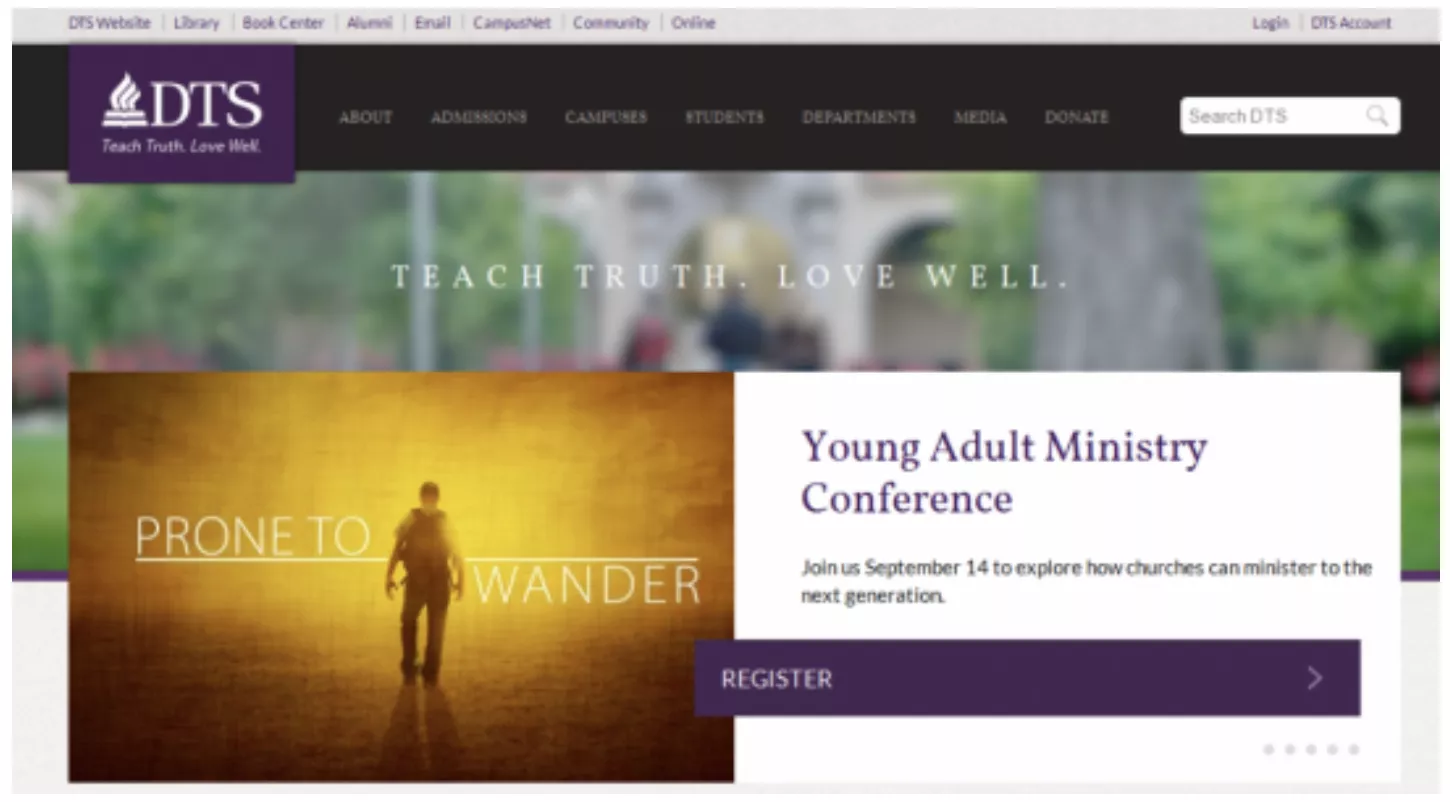
After:
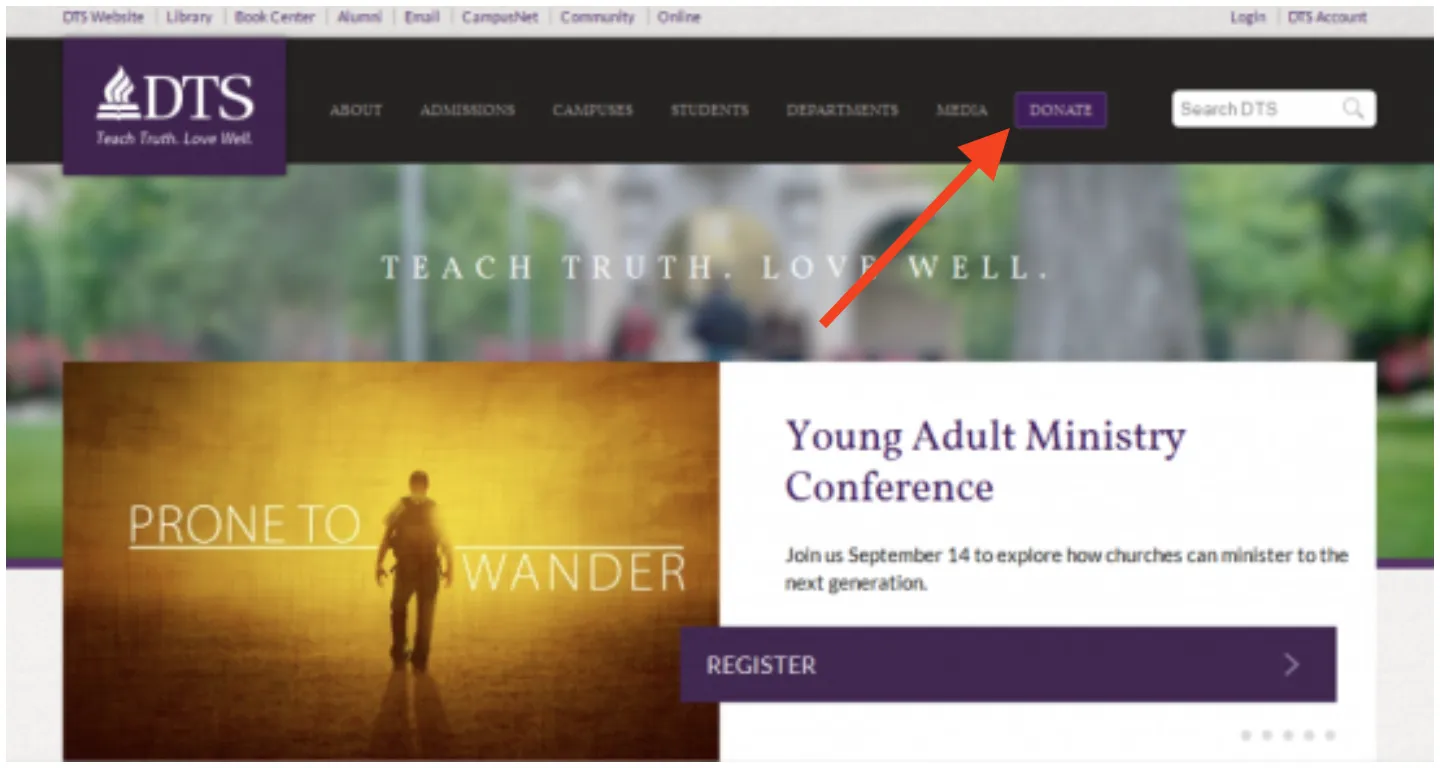
The result of this simple change? A 190% increase in conversions!
See? One tiny change can mean big results. And as you’ll see from the other tips we’ll go over, these small changes can lead to conversion increases of nearly 2000%... all with just a few simple changes.
The main idea behind conversion pushups is that a funnel is rarely 100% perfect on launch day. If it’s strategically crafted, well-written, and beautifully designed, it’s probably going to bring in some sales. But it likely won’t be converting at its full potential.
Instead, getting the kinds of conversion rates you’re hoping for is more of a process. It’s continually evaluating the funnel for weak spots and refining over and over and over again. And eventually, all the small changes you’re doing add up to a massive increase in the conversion rate of your funnel.
Tons of consistent improvements + time = monumental change.
It’s the same idea behind regular pushups.
Sure, 1 or 2 won’t do much on their own, just like doing 50 in a day won’t get you those rockin’ pecs you see in the movies. But if you keep at it every single day, you’ll look back a month or two from now and marvel at the progress you’ve made.
And with enough diligence and commitment, all of these small changes to your funnel will add up to better conversions, higher-quality leads, and record-breaking sales.
3 Types of Conversion Pushups
Alrighty, now that you have a solid idea of what a conversion pushup is, let’s look at the 3 types that we use here at Growbo.
For each type, the basic idea remains the same: go through a funnel and look for specific ways you can increase conversions.
However, what changes with each type is what you’re focused on.
- Conversion Pushup Type #1 focus: Structure
- Conversion Pushup Type #2 focus: Flow
- Conversion Pushup Type #3 focus: Optimization
And what you should be focusing on is determined by how far along your funnel is.
For instance, if your funnel isn’t seeing any prospects at all and no one is engaging with your content, you should be using the first type to analyze your funnel’s structure. That way, you can go from 0 leads to 1 lead.
If you’re seeing some leads moving through your funnel, then your structure is probably solid so it’s time to focus on your flow and pick out serious bottlenecks.
And if your flow is smooth and leads are moving through at a decent rate, it’s time to get into the weeds and optimize, optimize, optimize.
Now, let’s dive in a little deeper into each conversion pushup type.
Conversion Pushup Type #1: Structure (0 to 1 Leads)
The first type of conversion pushup is the one relating to structure.
This type of conversion pushup is usually the first one you’ll perform because it tackles the most basic necessities of a funnel: it has all the right pieces and leads can actually move through it.
Now, a lot of this should already be handled during the funnel design phase. During this phase, you’ll map out exactly which assets your funnel will have, where they lead to, and what’s involved in each.
But even still, it’s a good idea to double check that your funnel has all the basic pieces after launch anyway.
Conversion Pushup Type #2: Flow (1 to 10 Leads)
Once you have at least one lead moving through your funnel, it’s time to move on to the next conversion pushup type: flow.
This pushup type focuses on making it as easy as possible for leads to move through your funnel. And while the first pushup type identified clear blockages and dead ends, this type is more focused on spotting bottlenecks—where most of your leads are falling out of the funnel.
Okay, so your sales funnel isn’t getting the results you wanted, but you’ve got the right structure in place. Where’s the snag then?
Is it your thank you page after your lead magnet? Or your sales page that just isn’t getting the conversions you expected?
That’s exactly what this type of conversion pushup helps you determine.
Conversion Pushup Type #3: Optimization (10 to ∞ Leads)
Once you have a solid structure and a frictionless flow established, it’s time to start scaling your funnel’s conversion growth with optimization—conversion pushup type #3’s main focus.
During this phase, you’re looking for aspects of your funnel that can be A/B tested to tighten up your conversions and reduce your lead dropoffs.
Now, it’s important to realize that this type of conversion pushup should only be performed after you’ve developed a sound structure and verified that leads can move smoothly through your funnel. Those are the big fish to fry.
And only after that should you focus on optimization tweaks like these.
It’s also important to remember that these types of optimizations should be an ongoing part of your process, not just a one-time thing.
Remember the cast iron skillet from before? With each optimization conversion pushup you perform, it’s like you’re coating a skillet with one more layer of oil that makes cooking with it even better.
When it comes to conversion pushups at this stage of tweaking your sales funnel, it’s best to focus on the small tweaks you can make rather than the enormous overhauls.
After all, this is the optimization stage. And if you’ve been diligently performing the 2 other types of conversion pushups up to this point, you should have a strong underlying foundation already. An overhaul might actually work against that strong foundation.
Instead, look to the small changes you can make that can lead to big boosts in conversions. The Proven Sales Conversion Pack is a great resource for these small tweaks you can make in just a few hours.
Here are a few of our favorites…
Conversion Pushup Tip #1: Make Sure You Have the Right Pieces
The first conversion pushup you’ll ever do is making sure that you have all the necessary pieces in your funnel.
Let’s take our free consultation sales funnel—without a doubt one of Growbo’s most popular—as an example.
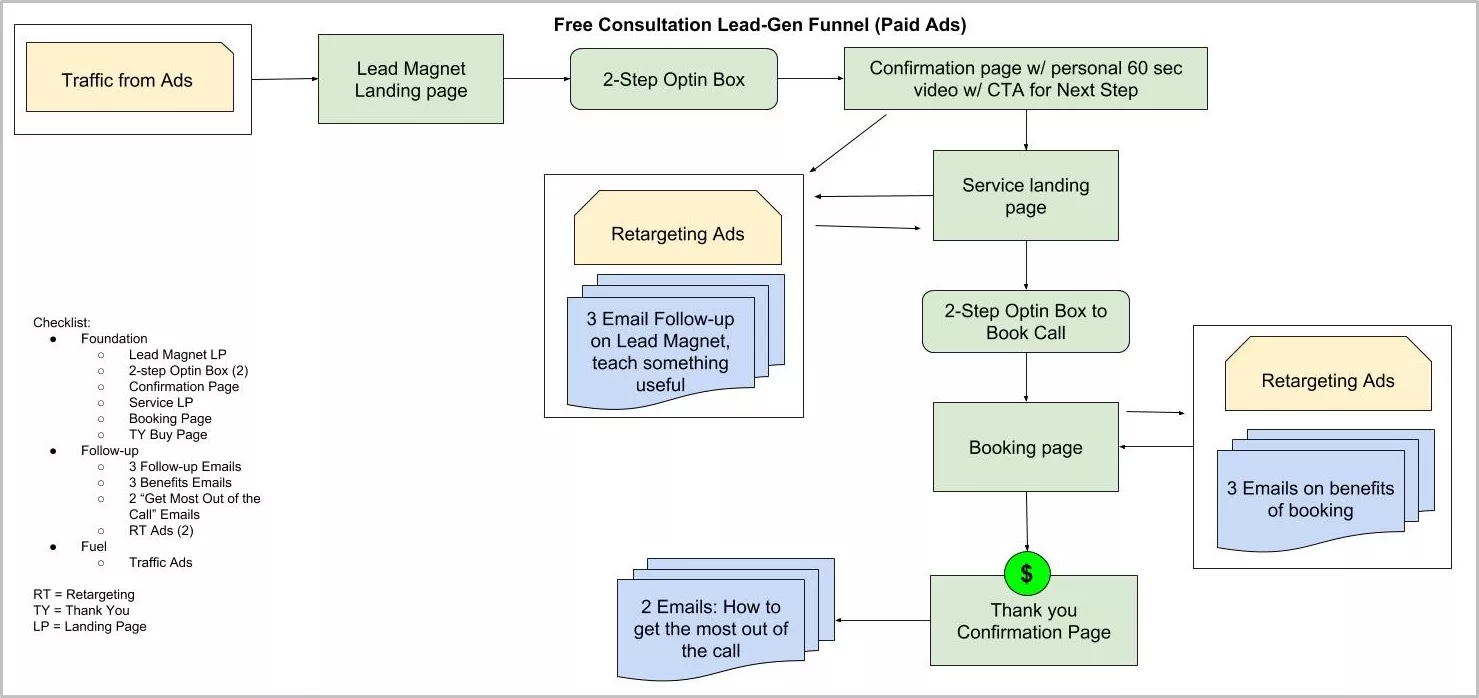
As you can see, there are quite a few pieces to this puzzle. Here are all the pieces listed out:
1. Foundation
- Lead magnet landing page
- 2-step optin box (2)
- Confirmation page
- Service landing page
- Booking page
- Thank you confirmation page
2. Follow-Up
- 3 follow-up emails
- 3 benefits emails
- 2 “get the most out of the call” emails
- Retargeting ads (2)
3. Fuel
- Traffic Ads
Now, while this sales funnel is actually one of our simplest in terms of complexity, you really only need a few basic elements to create a sales funnel that sees some results.
For most sales funnels, you’ll likely need at least the following funnel assets:
- Fuel Source for Your Funnel – Even the most well-constructed and irresistible funnel won’t mean a thing if you don’t have a way to bring people into it. That’s why every single funnel needs a source of fuel. There are tons of different fuel sources to choose from but below are 3 of the most common.
- Content marketing
- Paid ads
- Tapping into an existing email list
- Lead Magnet to Capture Attention & Information – A lead magnet is a “free” resource that’s designed to attract attention and capture information. In exchange for a prospect’s email address, they gain access to a valuable asset that you created. They’re meant to be low-risk, highly consumable, and especially useful for your target audience. Some great lead magnet ideas include:
- Checklists
- Recipe books
- Webinars
- Case studies
- Email courses
- Thank You Page – After your lead has downloaded your lead magnet, it’s time to push them over to the real goal: your sales page. But first, you’ve got to smooth out the transition. If, for example, you’re a real estate investment consultant and your lead magnet is a free webinar, you can’t redirect people who sign up for it right to your consulting page. They wouldn’t know what the heck happened. Instead, you have to thank them for downloading your lead magnet and then tell them why they also need your consultation services. And only then will they actually care about your service and even consider giving you a call.
- Sales Page – A sales page is where the magic happens. After a lead has started moving through your funnel and started to trust your business as an authority, it’s time to convince them that you have the solution to their problem. This is the #1 goal of the sales page. And once you do convince them that you’re the solution, it’s time to get them to buy. We’ve talked about all the specific optimizations you can use to boost your sales page conversion rates before. But for now, to build at least a foundational sales page, be sure to include at least the following:
- An explanation of your product or service
- How it solves your audience’s problem
- A clear call-to-action to buy or book a call
- Retargeting Assets – Not everyone who enters your sales funnel is going to be ready to buy immediately. And a good chunk of them will likely click off a page and drop out of your funnel. In order to plug that leak and bring people back in, a funnel needs retargeting assets – communications to past prospects that drive them back into your funnel. A few examples of these retargeting assets are:
- Retargeting paid advertisements (redirected after downloading lead magnet or from sales page)
- Follow-up email sequence educating the prospect about your service (redirected after downloading lead magnet)
- Follow-up email sequence describing the benefits of booking a call (redirected from sales page)
Conversion Pushup Tip #2: Double Check that Prospects Can Move Through Your Funnel
Once you have the structure of your sales funnel worked out, the next focus of this type of conversion pushup is making sure your leads can flow from one step to the next.
Within each asset, there needs to be a clear and accessible CTA that pushes leads from one step to the next.
Let’s take a look at our free consultation sales funnel diagram again to see what I mean.
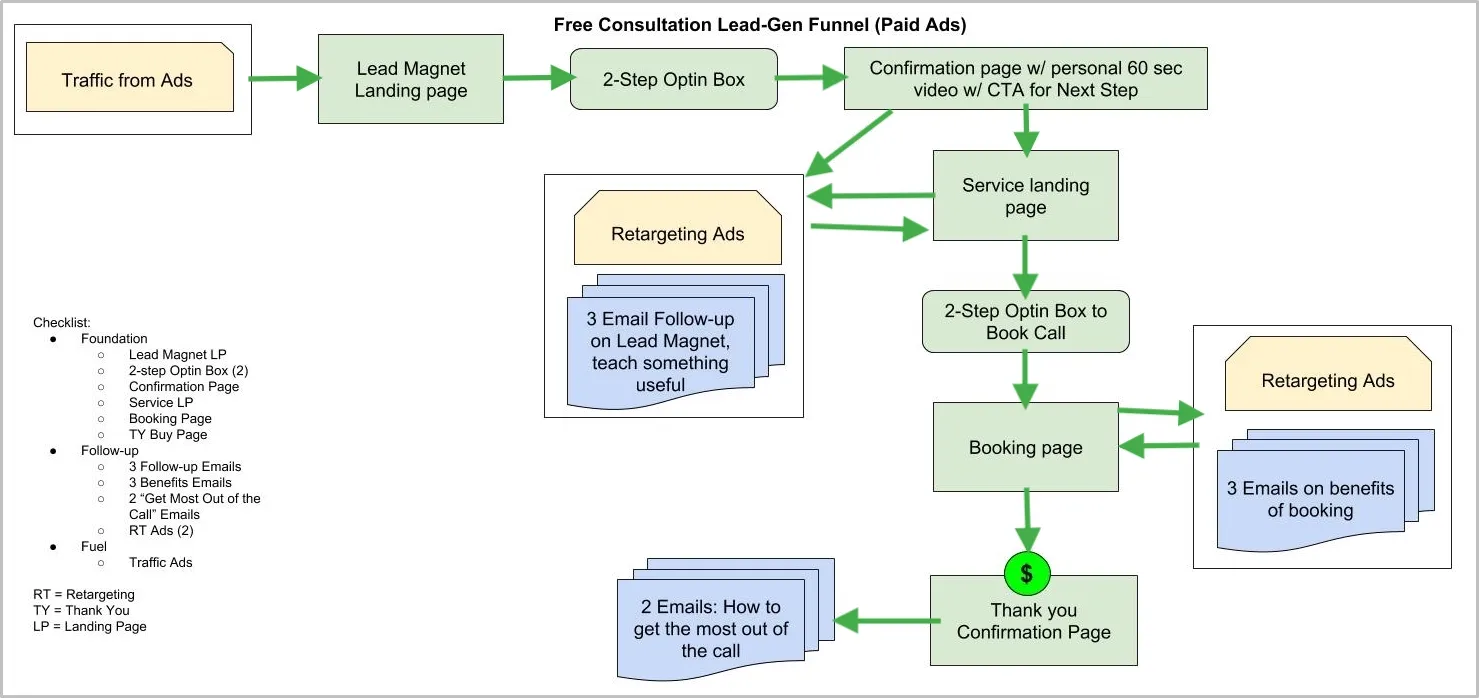
See all those green arrows? Those represent a clear transition from one asset to the next. And the way people can move from one to another is through working hyperlinks and buttons on your pages.
So when you’re performing this type of conversion pushup, make sure to test all your links and verify that each step has a clear CTA that leads to the next asset.
Because otherwise, it’ll leave your leads at a conversion-killing dead end.
Conversion Pushup Tip #3: Find the Right Funnel Fuel Source
We talked a little bit before about how every funnel needs a fuel source. Duh—otherwise, how are leads going to get into your funnel in the first place?
But what we didn’t cover was how important it is to find the right fuel source for you.
Should it be via paid search? Or organic search? Or social media?
It’s a good question. And there are pros and cons for each. So to ensure that you’ve found the right fuel source for your funnel, let’s look at some of the most notable pros and cons of each fuel source.
Btw, we dove quite a bit deeper into the differences between funnel fuel sources in a previous blog post, so for now, let’s just look at the highlights.
Paid Search Pros & Cons
Pros
- Ability to target the right audience
- Easily trackable ROI
- Generates traffic quickly
Cons
- Requires a budget
- Possible to misinterpret the searcher’s intent
- Users are less likely to click than with organic
Organic Search Pros & Cons
Pros
- Highly cost-effective once systems are in place
- May bring in more qualified leads
- People trust organic leads more
Cons
- Not as targeted as paid search
- Can take a long time to become effective
- Evolving algorithms can make it tough to stay on top
Social Media Pros & Cons
Paid
Pros
- POWERFUL targeting capabilities
- Massive potential audience
Cons
- Context can hurt conversions (usually not shopping)
- Authenticity counts, and that takes work
Organic
Pros
- Free!(ish)
- Showcases your unique personality
Cons
- It takes time
- It’s all very visible
For more on finding the right fuel source for your sales funnel, be sure to check out the blog post mentioned above!
Conversion Pushup Tip #4: Track Everything with a CRM
If you want to spot a bottleneck, you’ve got to keep track of how well each asset is performing. Makes sense, right?
And in order to do that and do that well, you need a quality CRM. A CRM (customer relationship management) tool lets you check up on each of your funnel assets to see how well it’s converting. But more than that, it also gives you insight into each of your leads’ unique journey through your funnel.
Where are leads dropping out of your funnel? What kind of messaging is bringing back the ones that do drop off? How qualified do leads have to be to interact with a specific piece of content?
A CRM lets you see all this information and more. And with that information, you can tighten up your funnel, boost your conversions, and earn more leads and sales for your business.
At Growbo, we use ActiveCampaign’s built-in CRM to give us the hard data we need to identify bottlenecks.
But a few other tools that are great at helping you identify conversion bottlenecks are…
Conversion Pushup Tip #5: Follow the Law of Alignment
The overwhelming majority of bottlenecks during this stage have to do with what’s known as the Law of Alignment, one of the 11 Laws of Funnel Physics that Matt has talked about in the past.
The Law of Alignment essentially says this: people have conscious and unconscious preferences and expectations on how they want to be sold and what they expect when they are in your funnel.
For instance, one of our current clients is a high-ticket professional business mentor. And when we first launched his lead magnet, conversions were surprisingly low.
After running a conversion pushup though, our strategists determined that the problem was based on false expectations. There were 2 reasons, in particular, this was happening.
- Our ads weren’t clearly targeting the right audience. And as a result, the people who did click on them didn’t have much interest in the lead magnet we were offering.
- The benefits on our lead magnet landing page didn’t line up with those mentioned in the ad. As a result, people came to the landing page expecting one thing, but they were left confused when the benefit that drove them there wasn’t mentioned at all. And so they left!
And both of these problems violated the Law of Alignment, leading our conversion rate to stay hovering in the single digits.
But after some tweaking of both the ads and lead magnet landing page, we saw an impressive 32% boost in conversions! It’s since leveled off a bit but even now, it’s evened out at a healthy 28%—not bad!

And it’s all thanks to us following the Law of Alignment.
Conversion Pushup Tip #6: Remove Funnel Friction w/ Integrations
Another one of the main focuses of this type of conversion pushup should be to remove friction throughout your sales funnel.
Humans will always follow the path of least resistance. By default, we’re lazy. And if you want people to move smoothly through your funnel, you’ve got to make it as easy as possible for people to do so.
One way you can make it as easy as possible to get from point A (entering the funnel) to point B (buying your product) is by using tool integrations in your funnel.
Integrations allow you to incorporate a tool or feature right into your sales funnel without having to be redirected to another page. Product checkouts, call scheduling, live-chat, webinar signup—all can be done right within your funnel with the right integrations.
One of our favorites we use for our clients is Calendly. This integration lets leads book a consultation call by simply clicking a button. Whether it’s from a lead magnet landing page, long-form sales page, or a pricing page, leads can book a consultation in just a few clicks (no redirecting required).
The result is a smoother flow through the funnel that’s sure to boost conversions.
Conversion Pushup Tip #7: Clarify Your Copy (Focus On Those CTAs!)
Your call-to-actions (CTAs) are perhaps the most important parts of your sales funnel.
When done effectively, they’re what drive visitors to move from one stage to the next. Done poorly though, they’re enough to make your audience click off the page without a second thought.
That’s why it’s vital to your conversions to be especially vigilant that your CTAs follow best practices. And ensuring the language used is crystal clear is one of the most important.
This one harkens back to the ever-important Law of Alignment again, but it’s a bit more specific. When your leads move from one stage to the next and are surprised by the next phase, it can be a conversion disaster.
Let’s look at an example to show you what I mean.

See the CTA button there? It says “Free Trial.”
What would you expect would be the next page you’d land on after clicking? The signup page, right?
In fact, the next stage of this funnel is actually the plans and pricing page – a vital part of any funnel.
Do you see the problem here? Up to this point, leads may have already learned about the problem, been shown the benefits of the service, and are on their way to signing up. They’re almost ready to buy.
But they still want to learn about how much the product actually costs and see the various plans. And when the next stage they’re seeing is just to sign up, they’re going to drop off because they simply aren’t ready for any kind of commitment (even if it is a free trial).
The solution? Be clear about what stage is next. Like this...
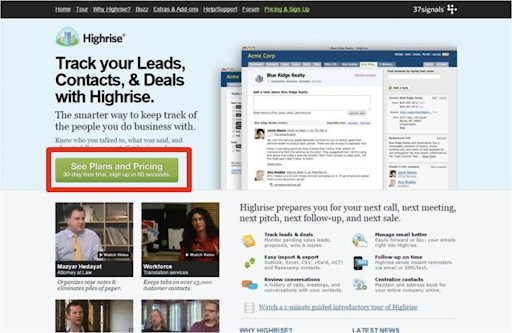
So, how much did this simple change help conversions? By simply clarifying the words on the CTA button, it brought in 200% more clicks!
Now that’s a tiny change with big results that anyone could get behind.
Conversion Pushup Tip #8: Use Real Images to Boost Form Submission
Moving away from stock images led to a massive conversion rate increase of 161% for this trucking company.
Before:

After:
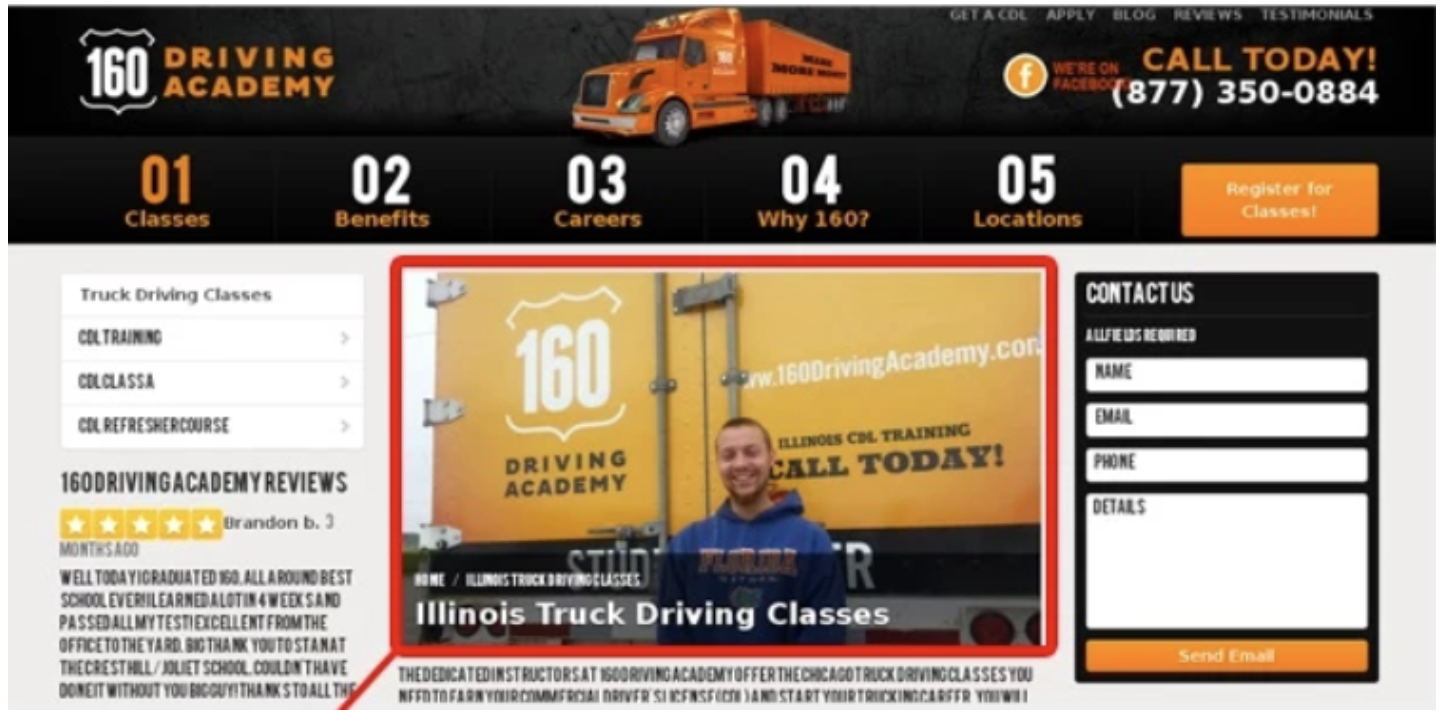
Conversion Pushup Tip #9: Use Fewer Form Fields to Increase Completion Rate
Removing just 2 out of 7 form fields (“Phone Number” and “How did you hear about us?”) led to a huge jump in form completions — by 1864.2% in fact!
Before:
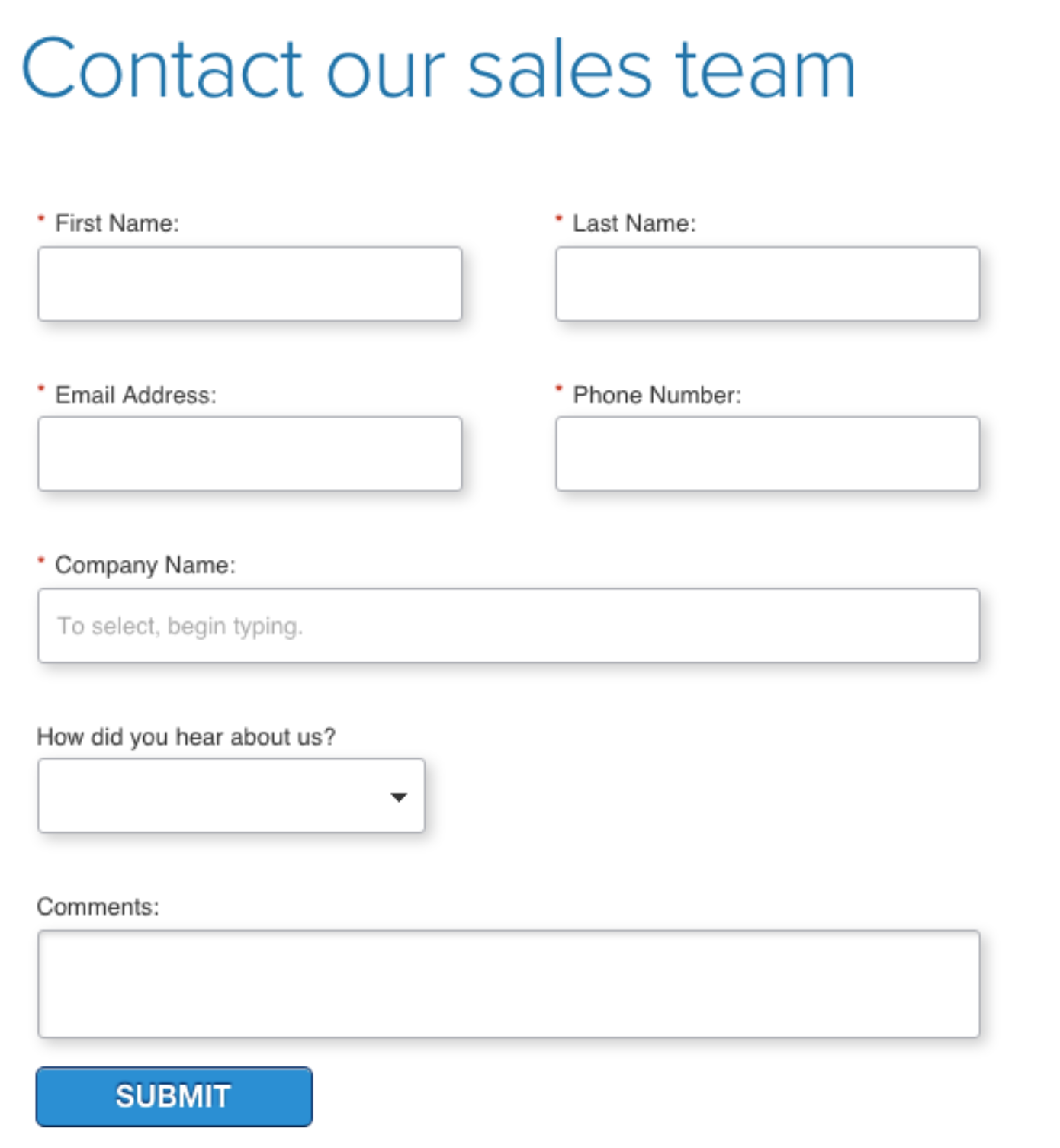
After:

Conversion Pushup Tip #10: Consider Removing Primary Navigation
Though you might not expect it, removing primary navigation from your sales page can actually decrease distractions and improve conversion rates. This college saw a 336% jump in signups from this optimization alone.
Before:

After:
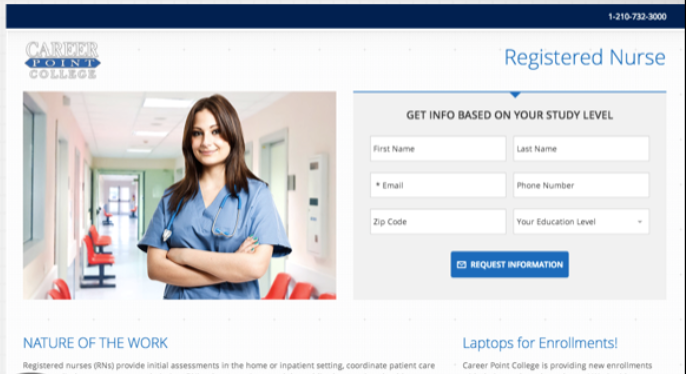
Conversion Pushup Tip #11: Highlight “FREE” When You Can
It’s tough to match the appeal of “free.” So when your product or service offers anything for free, be sure to call attention to it in your CTAs. Just have a look below at how adding the simple words, “It’s free!” after a CTA boosted conversions by a massive 28%.
Before:

After:

Conclusion
Want to delegate all your marketing and funnel work done—without the headaches of hiring? Download our free guide: 33 Marketing Projects You Can Delegate to Growbo and discover how to save 100+ hours a month, grow faster, and scale without the overhead.
Building your sales funnel is only the first step in creating an automatic sales and lead generation machine.
In order to get it up to its conversion potential, you need to perform all 3 types of conversion pushups:
- Structure Conversion Pushups (0 to 1 Lead)
- Flow Conversion Pushups (1 to 10 Leads)
- Optimization Conversion Pushups (10 to ∞ Leads)
And in order to get the absolute highest boost in conversions possible, be sure to follow the 11 tips I went over above:
- Make Sure You Have the Right Pieces
- Double Check that Prospects Can Move Through Your Funnel
- Find the Right Funnel Fuel Source
- Track Everything with a CRM
- Follow the Law of Alignment
- Remove Funnel Friction with Integrations
- Clarify Your Copy (Focus on Those CTAs!)
- Use Real Images to Boost Form Submission
- Use Fewer Form Fields to Increase Completion Rate
- Consider Removing Primary Navigation
- Highlight “FREE” When You Can
It’s true, tweaking your funnel over and over again so that it reaches its true potential can be a bit of a hassle. But with enough effort, it can lead to truly sky-high conversions that can revolutionize your business.
And hey, if you don’t have the time or the expertise to do it on your own, Growbo’s instant Done-For-You sales funnel marketing team is here to help you!
So, how has implementing conversion pushups for your sales funnel helped? What kinds of conversion rate increases have you seen? Got any conversion pushup tips we didn’t mention?
Let us know in the comments section below.
And as always…
Keep funnelin’, stay focused.
Alex T.













